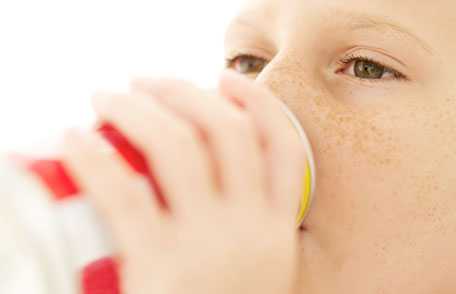Combatting Childhood Obesity
 Recent scientific studies are beginning to show progress against the childhood obesity epidemic, but the numbers of young people affected by obesity remain at high levels. Learn what you can do to combat childhood obesity.
Recent scientific studies are beginning to show progress against the childhood obesity epidemic, but the numbers of young people affected by obesity remain at high levels. Learn what you can do to combat childhood obesity.
Childhood Obesity Touches Approximately 1 of 6 Young People
Nearly 18% of all children and teens in the United States are obese, and since 1980, the number has almost tripled. Research shows that fewer physical activity programs in schools, and drinking too many sugar-sweetened beverages, likes sodas and juices, are just some of the reasons childhood obesity is growing in the United States. The good news is there are a number of actions communities, states, schools, and parents can use to combat the childhood obesity epidemic.
What Is Childhood Obesity?
Obesity has several harmful effects. It puts a child at risk for high blood pressure, high cholesterol, heart disease, type 2 diabetes, respiratory problems, and other conditions. And children who are obese are more likely to be obese as adults.
Obesity is determined by a formula called body mass index (BMI). Childhood obesity is defined as a BMI at or above 25 or at or above the 95th percentile. BMI does not measure body fat directly, but it is a reasonable indicator of percentage of body fat for most children and teens. You can use a simple online Child and Teen BMI Calculator to determine your child’s BMI.
Is It Getting Better?
According to CDC’s August 2013 Vital Signs report, after decades of rising obesity rates among low-income preschoolers aged 2–4 years, many states are now showing small declines in childhood obesity rates. Among older children, a recent CDC survey shows that school districts nationwide are making school meals more healthy and requiring physical education.
Improvements in childhood obesity rates have also been noted at the local level. For example, a study conducted in Philadelphia, Pennsylvania, and published in CDC’s Preventing Chronic Disease (PCD) reported that childhood obesity has declined in Philadelphia. Children drinking fewer sugary beverages has also been noted by researchers, as seen in “Declines in Sugar-Sweetened Beverage Consumption Among Children in Los Angeles County, 2007 and 2011.” However, childhood obesity numbers are still too high. Although we are finding better ways to help children be a healthy weight, researchers note that much work remains before childhood obesity rates begin to show a dramatic decline.

Make sure your child gets physical activity each day.
What Needs to Be Done?
The good news is we know what works. States, communities, schools, and parents can work together to help make the healthy choice the easy choice for children, teens, and their families by
- Supporting healthy school nutrition plans by providing a quality school meal program, and offering students only healthy and appealing food and beverages outside of the meal program.
- Developing school physical activity programs that include quality physical education, classroom physical activity breaks, recess, and opportunities for physical activity before, during, and after school.
- Making free drinking water available to all students and limiting the sale of drinks with added sugars, like sodas and juices in schools. Learn more at Nutrition Standards for Foods in Schools, Water in Schools.
- Creating and maintaining safe neighborhoods for physical activity and by making parks and playgrounds easy to get to. Learn more at National Center for Safe Routes to School and National Recreation and Parks Association.
What Can Parents Do?
Many things can influence the choices we make for our families, like where we live or how much money we have. We want the healthy choice to also be the easy choice for you and your family, and that can sometimes be hard. The good news is there are a number of steps you can take to make sure your child is healthy:
- Follow the advice of the American Academy of Pediatrics regarding age appropriate media time for kids whether at home, school, or child care. AAP Recommendation on Television Time for Children and Adolescents.
- Visit your child care center to see if it serves healthful foods and drinks, encourage physical activity and limit screen time. Learn more at National Association of Child Care Resource & Referral Agencies.
- Provide plenty of fruits and vegetables, limit foods high in solid fat and added sugars, and prepare healthier foods at family meals. Learn more at 2010 Dietary Guidelines for Americans and Healthy Recipes.
- Save money and calories by serving your family tap water instead of drinks with added sugars. Learn more at Rethink Your Drink.
- Making sure your child gets physical activity each day. Learn how much physical activity children need.
More Information
More Information
More information and research about childhood obesity is available in the following Preventing Chronic Disease articles and via these CDC resources.
- Page last reviewed: October 21, 2015
- Page last updated: October 21, 2015
- Content source:
- National Center for Chronic Disease Prevention and Health Promotion, Division of Nutrition, Physical Activity, and Obesity
- Page maintained by: Office of the Associate Director for Communication, Digital Media Branch, Division of Public Affairs




 ShareCompartir
ShareCompartir